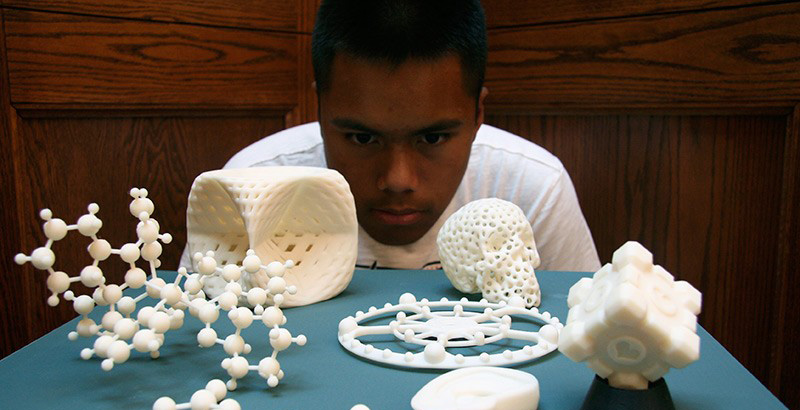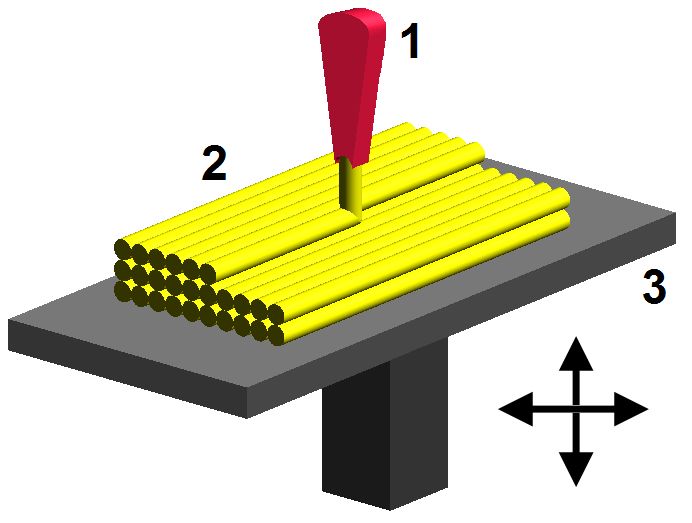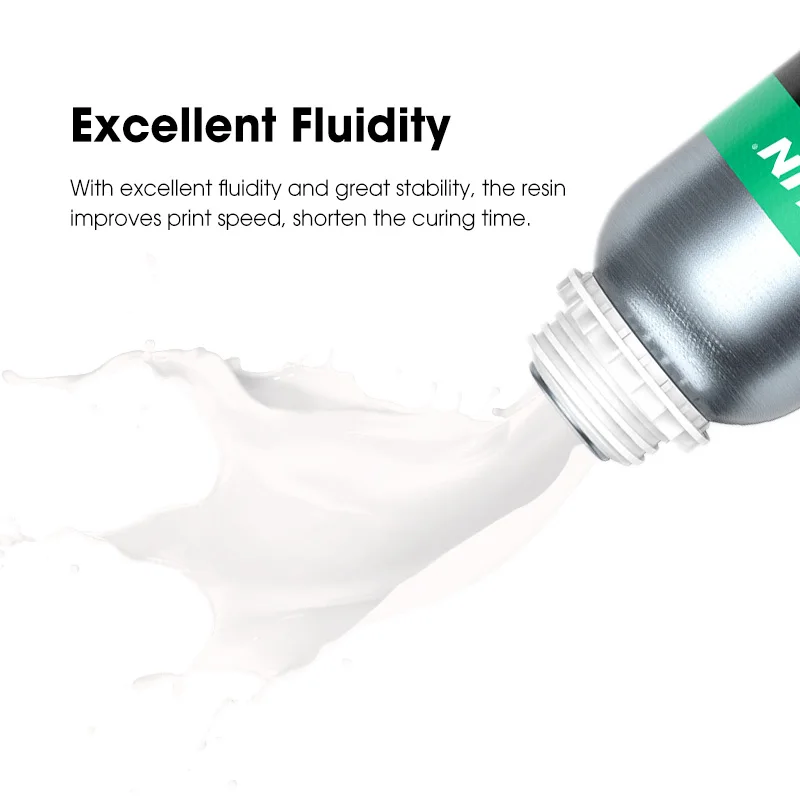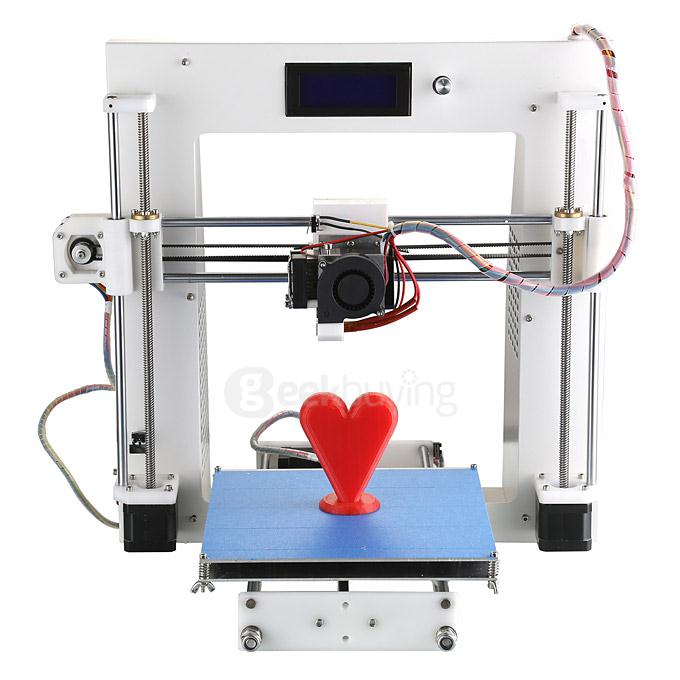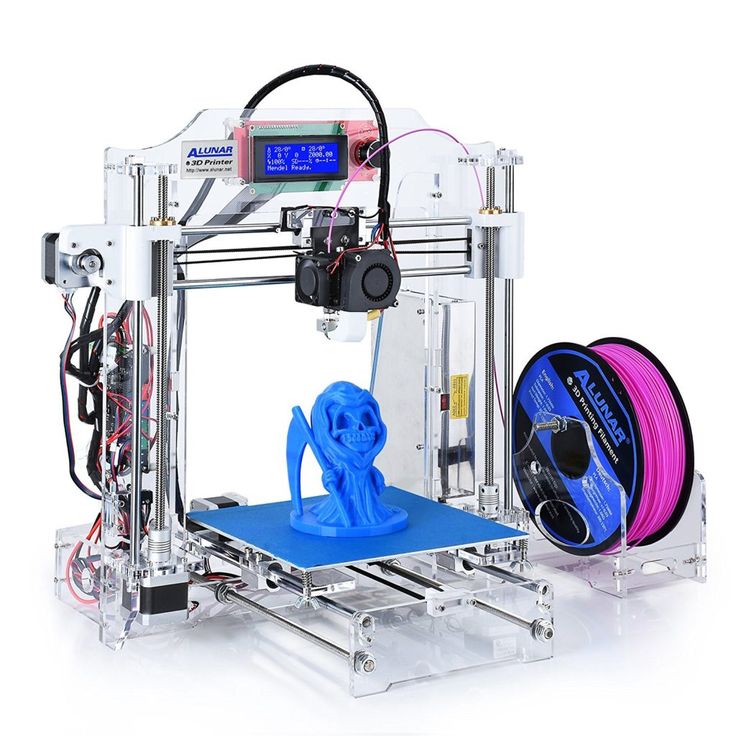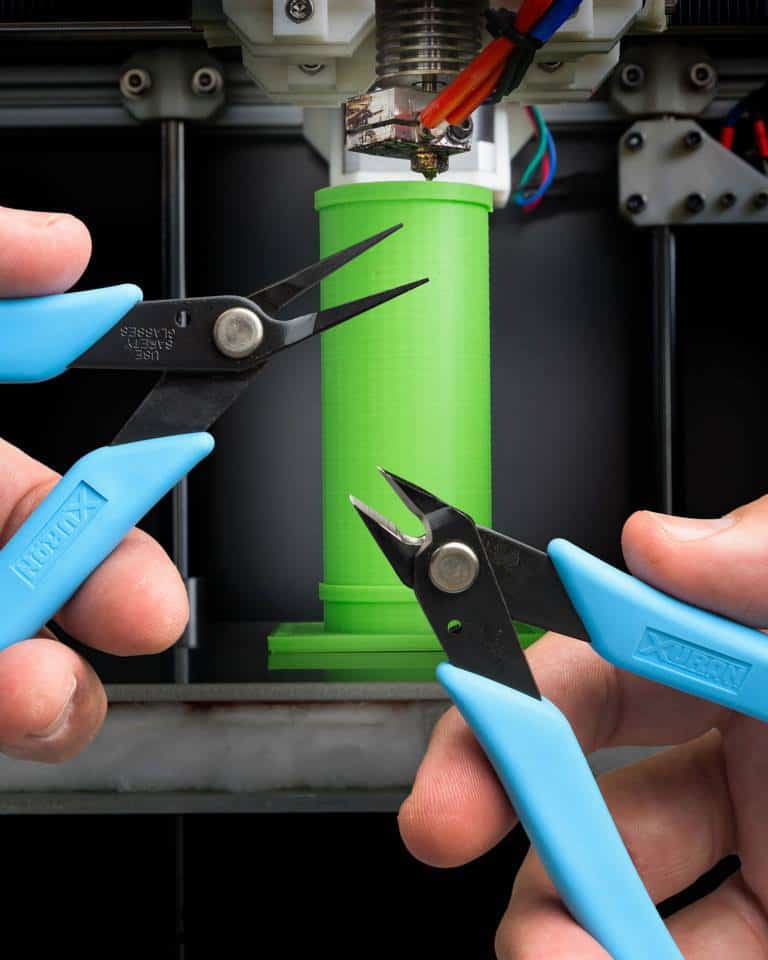3D printing sneakers
3D Printed Shoes: What's Available on the Market Today?
Published on March 4, 2022 by Carlota V.
In August 2020, research firm SmarTech Analysis unveiled its second study on the 3D printing and footwear market. According to the report, this industry is expected to generate more than $8 billion in profits by 2030. And it must be said that additive manufacturing offers a number of benefits in footwear production, perhaps the most important being the ability to customize the final product. Consumers are looking for differentiation and uniqueness, and 3D technologies can meet that need. They are also able to offer custom-made products with complex designs, perfectly adapted to each individual’s morphology. Thus, thanks to 3D scanning and 3D printing, companies are imagining more efficient sneakers, futuristic shoes for high fashion or comfortable and durable soles. Yes, it should be noted that it is not always the entire shoe that is 3D printed – which is actually quite rare – but rather the upper or the sole for example. In any case, 3D printing and footwear go hand in hand, and the market certainly is showing a lot of promise! For that reason, we wanted to introduce you to a few of the most impressive 3D printed shoes currently available, whether for sports, going to the beach or just going to work.
Adidas’ Range of 3D Printed Shoes
When it comes to 3D printed shoes, we would be remiss if we do not mention the offerings from famed shoe manufacturer, adidas. The company has been using 3D printing since 2017 when it entered into a partnership with Carbon to create new shoes, starting in 2018 with Futurecraft 4D 3D printed shoes, which are still being sold. Since then, they have continued to use additive manufacturing to create unique, sustainable footwear. For example, just last year the company released two new 3D printed sneakers, the 4D Fusion and the adidas 4DFWD, the latter of which was specifically created to improve athlete performance. According to the company 3D printing adds performance thanks to the lattice structure as well as adding a lot of flexibility to its activities, from reducing lead times to offering a shoe that could be completely customized at a reasonable price.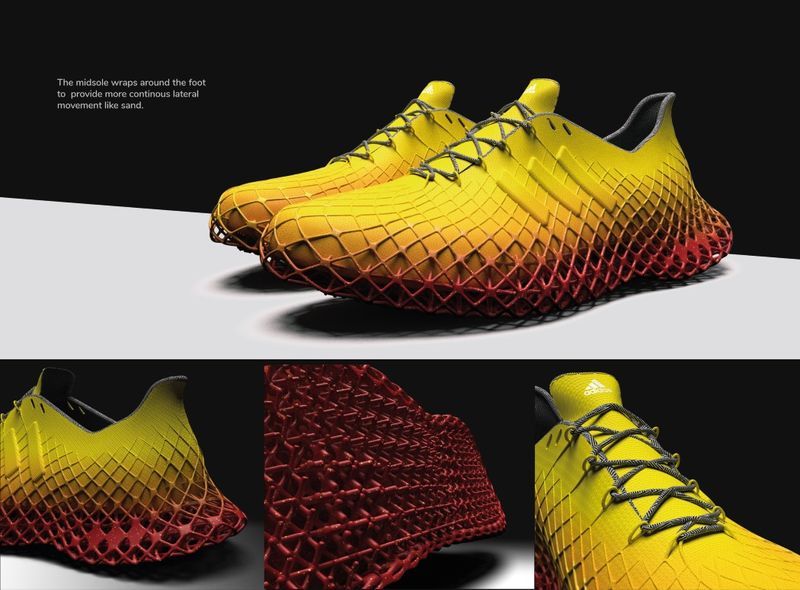
Thanks to Carbon’s DLS technology, the adidas 4DFWD has a unique lattice midsole made of 40% bio-based material (photo credits: adidas)
Liquid Speed from Reebok
Reebok is one of the largest and most recognized companies in the footwear industry. That’s why, a few years ago, they decided to use additive manufacturing technologies to create soles for one of their athletic shoe collections. While the rest of the shoe was made using traditional methods, the Liquid Speed incorporates a maximum fit sole. Reebok partnered with chemical company BASF, who used a liquid polyurethane material. They used a programmed robot to create the successive layers, bringing the sole to life. In addition to offering better performance and durability, the Liquid Speed has a very original design.
The Liquid Speed’s design is original
New Balance Incorporates a 3D Midsole
In a similar vein, New Balance has collaborated with 3D Systems to develop 3D printed midsoles. DuraForm Flex are insoles created with SLS technology from a thermoplastic elastomer material.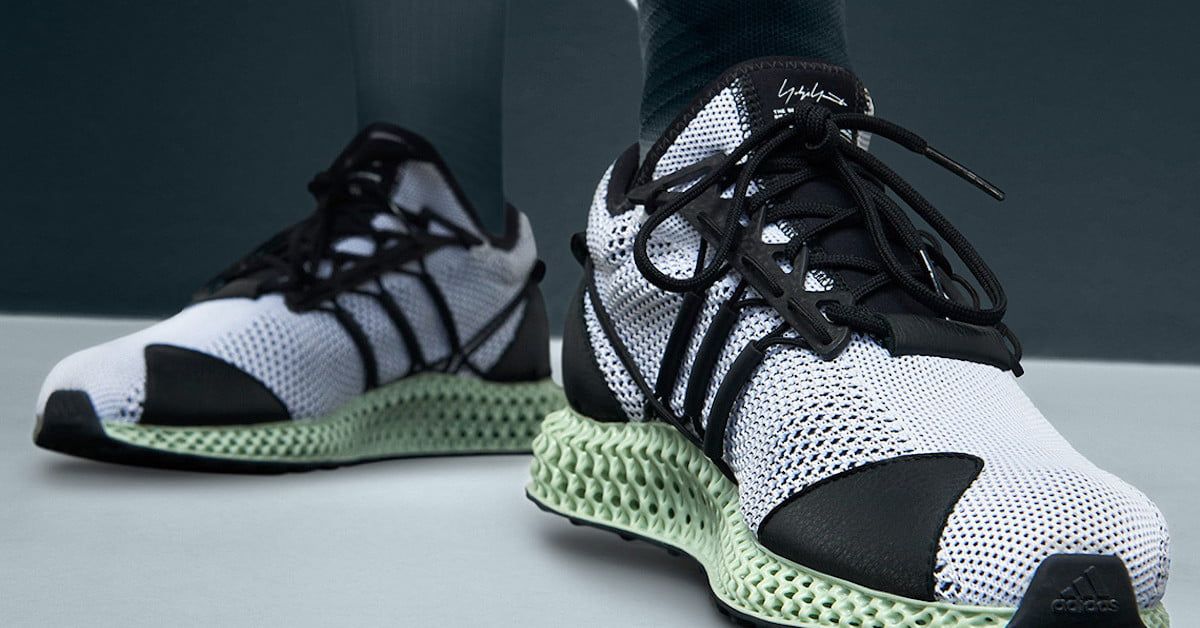 They combine strength and flexibility and provide maximum comfort for the sports shoe. The 3D printing technology allows the production of complex structures that optimize shock absorption while making the shoe lighter. Since then, the American brand has been working with Formlabs and its stereolithography technology on the development of a Triple Cell platform to produce the FuelCell Echo.
They combine strength and flexibility and provide maximum comfort for the sports shoe. The 3D printing technology allows the production of complex structures that optimize shock absorption while making the shoe lighter. Since then, the American brand has been working with Formlabs and its stereolithography technology on the development of a Triple Cell platform to produce the FuelCell Echo.
The shoe’s midsole was 3D printed
ECCO and its customizable midsoles
ECCO is a Danish shoe manufacturer with many years of experience in the industry. In 2019, the company launched its Quant-U service aimed at customizing shoes through 3D printing. Using a 3D scanning process of the feet, it is possible to determine the orthopedic fit required for each person. With this device, ECCO designs 3D printed insoles tailored to the needs of its customers. This part is made from silicone, a material that provides stability as well as an adequate degree of cushioning. In addition, the company says the insoles are easily interchangeable and can be put in the washing machine.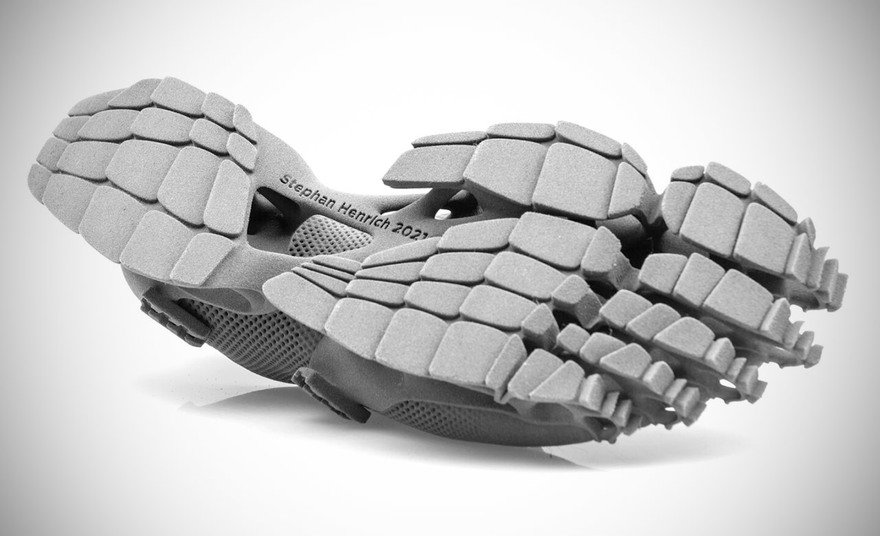
Photo Credits: ECCO Quant-U
Wiivv Goes for Customization
Wiivv is a young Canadian company that specializes in the production of 3D printed soles and flip-flops, entirely adapted to the wearer’s morphology. Thanks to a Smartphone application, the user can directly scan his or her foot, send their data to the company and receive a customized solution a few weeks later. Take flip-flops for example: thanks to 3D printing, Wiivv can customize certain elements of the shoe such as the straps or the vertical strap. The objective is of course to offer more comfort to the user. The company is equipped with a machine park in San Diego and the product is made using SLS technology.
Wiivv’s flip-flops are fully customizable
Sustainable 3D Printed Shoes
How can you best combine fashionable footwear with a responsible environmental conscience? By using additive manufacturing! Chris Margetts, founder of The Sole Theory and fashion brand Humans Are Vain, uses recycled textiles to make his 3D printed shoes.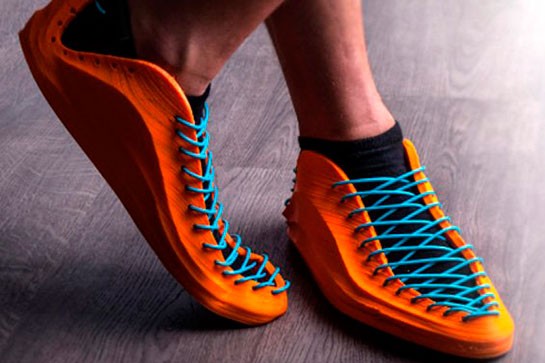 He explains, “There is a strong demand for more sustainable products. There is no doubt that there will be consumers who want to buy this type of footwear when we launch it on the market.” He is deliberately using the fibers from clothing he once loved to turn into composite materials. This way, they can be used as material for 3D printing to create new shoes. The fibers are ground up and turned into filament for ZYYX Labs’ 3D printer.
He explains, “There is a strong demand for more sustainable products. There is no doubt that there will be consumers who want to buy this type of footwear when we launch it on the market.” He is deliberately using the fibers from clothing he once loved to turn into composite materials. This way, they can be used as material for 3D printing to create new shoes. The fibers are ground up and turned into filament for ZYYX Labs’ 3D printer.
Photo Credits: The Sole Theory
HERON01, the Fully 3D Printed Sneaker
Attention sneaker fans: the 3D printed HERON01 is sure to be a crowd-pleaser. This shoe was made entirely by additive manufacturing by the American company Heron Preston, named after its founder Heron Preston Johnson. For this model, the founder of Heron01 is particularly focused on the theme of sustainability, as no glue or toxic materials were used in the production process. It was also possible to dispense with the use of seams, which means that the shoe can be completely recycled. The scraps and waste can eventually be used to make a new product. The design idea that goes beyond traditional shoe making is also reflected in the shoe’s features: low ankle cutouts, printed scales and textures, and the bird’s foot pattern on the sole.
The scraps and waste can eventually be used to make a new product. The design idea that goes beyond traditional shoe making is also reflected in the shoe’s features: low ankle cutouts, printed scales and textures, and the bird’s foot pattern on the sole.
The HERON01 sneaker (photo credits: HERON01)
Natives Shoes and its 3D Printed Shoes
Canadian manufacturer Native Shoes launched the Liquid Printed Natives project with the intention of developing everyday objects using advanced methods such as additive manufacturing. As part of this, the company used liquid rubber to 3D print shoes. The manufacturer says it used a 50% recycled ethylene vinyl acetate (EVA) material to achieve greater flexibility and a more rubbery appearance. What stands out about Native Shoes’ project is the speed of production, with the company explaining that 3D technologies have significantly reduced manufacturing time compared to traditional methods. They also offer consumers a high level of customization.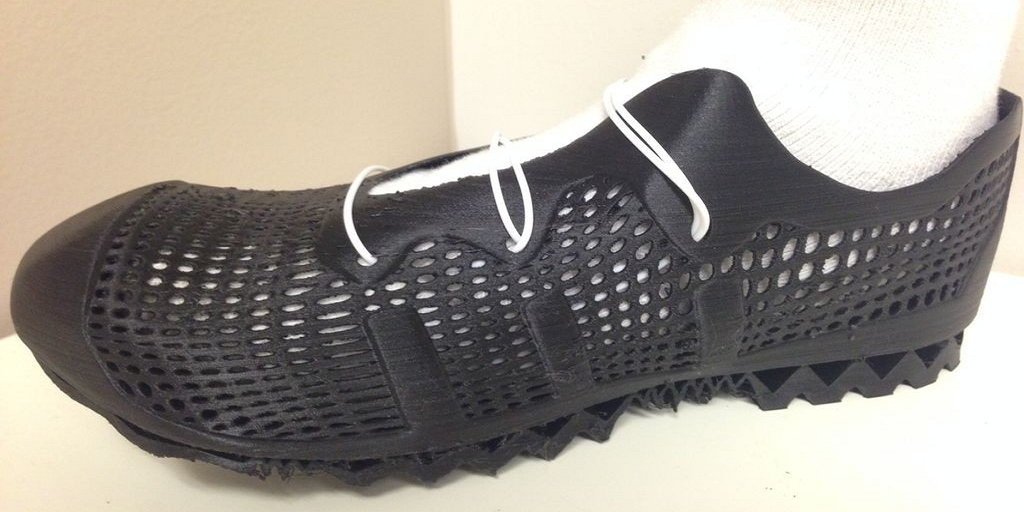
The shoes would be 3D printed directly into a tray containing a reusable water-based viscous gel formula
Eco-Friendly Sandals
We continue in this trend of 3D printed sandals with the Organic collection, imagined by a young student in fashion design, Lucie Trejtnarová. In collaboration with the material manufacturer Fillamentum, she 3D printed the outer sole of the sandal on which she sewed several organic fabrics made from fibers extracted from pineapple or coconut leaves. The printed sole had to be strong enough to support this fabric, so Lucie chose a TPU that was flexible enough but resistant to abrasion and wear. It also has a recyclable character, a key component for the young woman.
Mycelium Shoe, Futuristic Shoes
Imagined by the design studio Ica and Kostika, the Mycelium Shoe pair is entirely 3D printed on an SLS machine. Rather imposing by its shape, its size and its design, it does not go unnoticed in the street – besides, only 5 pairs were created.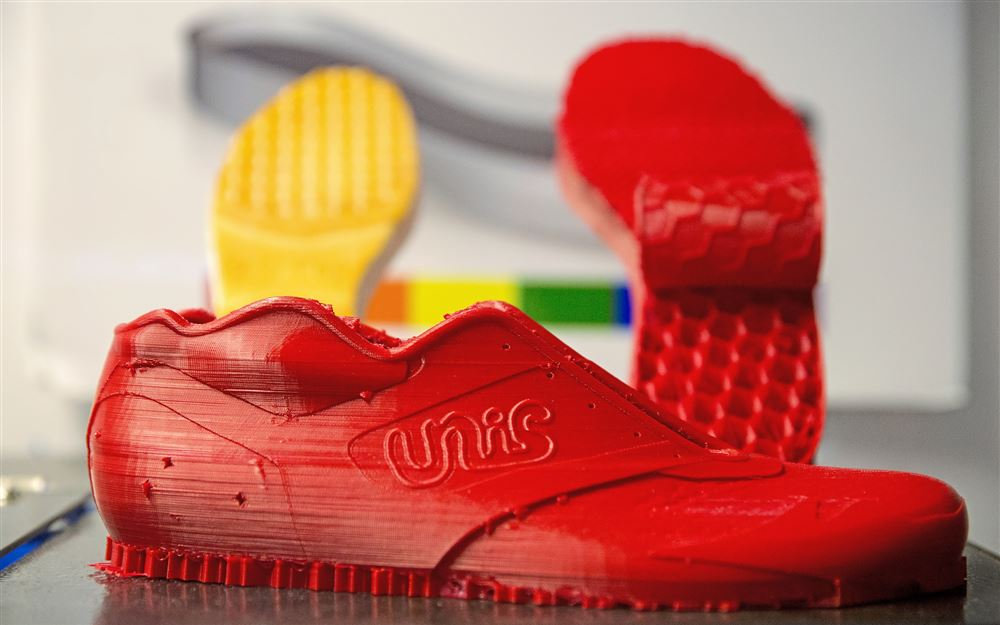 Its designers claim that these 3D printed shoes are very comfortable because they are entirely customized to the person’s feet: the 3D file is made from scanned data. It remains to be seen if walking in them is fun!
Its designers claim that these 3D printed shoes are very comfortable because they are entirely customized to the person’s feet: the 3D file is made from scanned data. It remains to be seen if walking in them is fun!
Only 5 pairs were created
Hilos, The Sustainable 3D Printed Shoe
Portland-based startup Hilos was founded in 2019 and wants to transform the way shoes are made, combining technology and craft. Through additive manufacturing, the company hopes to address environmental issues, while providing quality footwear. Recyclable, this shoe is made through selective laser sintering and is designed from TPU, because of its flexibility and strength. The company confides that, with the help of 3D printing, it is able to bring new product lines to market in just two weeks, compared to the industry average of 12 to 15 months.
ATHOS, 3D Printed Climbing Shoes
Developed by a group of students in Barcelona, ATHOS climbing shoes are gaining in popularity. Also known as “climbing shoes”, this type of shoe must fit the athlete’s foot perfectly to improve grip and prevent slipping. Usually, to make sure they have a good fit, athletes wear climbing shoes that are smaller than theirs, which causes pain and deformity of the foot. This is why the team behind ATHOS wanted to create custom-made climbing shoes that meet the needs of each climber. To do this, they use HP’s MultiJet Fusion 3D printing technology and BASF’s TPU material. The process to get the ATHOS shoes is very simple: just scan your feet with 3 photos, customize the shoes to your liking, and once you get them home, you can start climbing!
Also known as “climbing shoes”, this type of shoe must fit the athlete’s foot perfectly to improve grip and prevent slipping. Usually, to make sure they have a good fit, athletes wear climbing shoes that are smaller than theirs, which causes pain and deformity of the foot. This is why the team behind ATHOS wanted to create custom-made climbing shoes that meet the needs of each climber. To do this, they use HP’s MultiJet Fusion 3D printing technology and BASF’s TPU material. The process to get the ATHOS shoes is very simple: just scan your feet with 3 photos, customize the shoes to your liking, and once you get them home, you can start climbing!
Photo Credits: ATHOS
Pleko, the Carbon Fiber Shoe for Running
The brainchild of Italian middle-distance runner Miro Buroni and the Diadora company, the Pleko is a shoe made up of many 3D printed components. The 3D printed parts include the insole, outsole, spikes and ribs. Designed from composite materials, carbon fiber to be precise, and with the help of the powder sintering process, these different elements have made it possible to manufacture a shoe that is flexible, resistant to wear and tear and above all customizable. Indeed, thanks to 3D scanning and software that simulates the movements during a race, the teams behind the shoe are able to offer a durable and comfortable solution to athletes.
Indeed, thanks to 3D scanning and software that simulates the movements during a race, the teams behind the shoe are able to offer a durable and comfortable solution to athletes.
Photo Credits: CRP Technology
A 3D Printed Shoe for Dance
The Purmundus Challenge 2021 competition was won by Act’ble, a start-up company that collaborated with top athletes to develop a new pointe shoe. Intended for classical ballet and contemporary dance, the shoe is called “New Pointe Shoe Sole”. Expected to last five times longer than traditional pointe shoes, the shoe was designed to significantly reduce the physical pain dancers experience during ballet. To make the shoe, the team 3D printed the sole, but did not specify what process they used or the materials that make up the shoe.
Photo Credits: Act’ble
The Parametriks Print 001, a Shoe Entirely Printed from a Single Material
Earlier this year, designer Nathan Smith unveiled the Parametriks Print 001 sneaker, a 3D printed shoe designed using parametric design.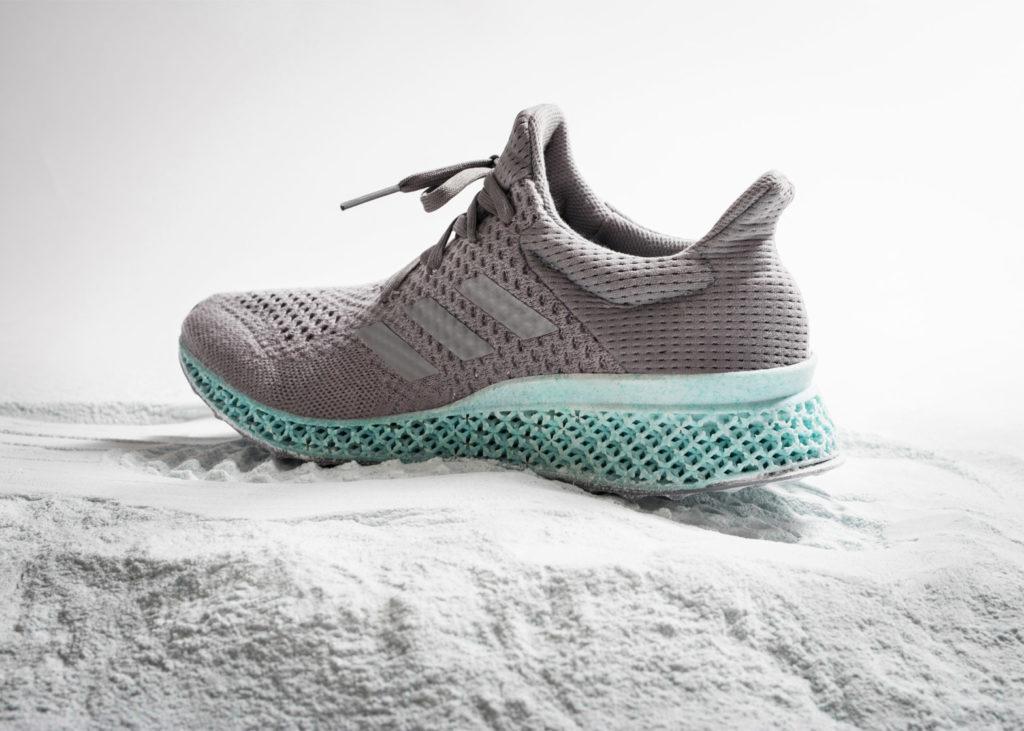 This method, using design and material science to engineer parts, resulted in a shoe that stands out from the crowd for its comfort. To develop the Parametriks Print 001, Nathan Smith says he used Grasshopper, a plug-in included in Rhinoceros 3D modeling software. As for the manufacturing of the shoe, the designer explains that he relied on SLA machines and used TPU.
This method, using design and material science to engineer parts, resulted in a shoe that stands out from the crowd for its comfort. To develop the Parametriks Print 001, Nathan Smith says he used Grasshopper, a plug-in included in Rhinoceros 3D modeling software. As for the manufacturing of the shoe, the designer explains that he relied on SLA machines and used TPU.
Photo Credits: Parametriks
What do you think of these 3D printed shoes? Let us know in a comment below or on our Linkedin, Facebook, and Twitter pages! Don’t forget to sign up for our free weekly Newsletter here, the latest 3D printing news straight to your inbox! You can also find all our videos on our YouTube channel.
How 3D printing revolutionizes the footwear industry
3D Learning Hub
See all categories
Contents:
- Introduction
- Designers and 3D printing
- 3D printed footwear: try a new manufacturing process and new materials
- Are 3D printed shoes for everybody?
- 3D printed sneakers
- What about the future of 3D printed footwear?
Introduction
Designers and 3D printing
As we saw with the Virus Collection 3D printing allows designers to create clothes. But its utility in the fashion tech doesn’t end here because it’s also possible to create shoes with astonishing designs.
But its utility in the fashion tech doesn’t end here because it’s also possible to create shoes with astonishing designs.
For example, Zoe Jia-Yu Dai, a designer based in Taiwan and specialised in footwear, created “Breaking the 3D Mould”, a shoes collection with 3D printed parts. This technology allows designers to go further with the design structures. It is a way to change the manufacturing process. It’s easier to create organic structures with additive manufacturing, than with a traditional process.
It is obviously a good way to create prototypes to work on the design of any shoe. Some designers only focus on the design of the shoes. Melissa’s shoes are a great example of the possibilities offered by the 3D printing technology when it comes to design. Check out our blogpost about Melissa’s footwear experiments.
Silvia Fado, a spanish footwear designer, uses 3D printing and laser cutting to do rapid prototyping. Inspired by engineering and architecture, Silvia Fado focusses on style but not only since she’s also interested in the movement of the body, the wearability of the shoes, and the comfort elements that are part of the shoes. She works on the aesthetic and on the functional value of footwear.
She works on the aesthetic and on the functional value of footwear.
3D printed footwear: a good way to try a new manufacturing process and new materials
Rethink your production
Like in other sectors, 3D printing can be used to develop new manufacturing processes. It can give more possibilities and opportunities to any company. For example: Feetz. It is an American startup run by Lucy Beard. They make custom shoes, easy to wear and with a nice style. On top of that, Feetz is also committed to protect the environment.
They developed their own 3D printer, using a Fused Filament Fabrication technique, and their own 3D printing material: a patented polymer. They wanted to rethink the whole manufacturing process, in order to make it more sustainable. Feetz uses recycled and recyclable materials, no water and reduced by 60% their carbon footprint. Moreover there is no material waste because with 3D printing you only use the quantity that you need.
Their use of 3D printing in their manufacturing process shows that it is possible to change the way the shoes industry affects the environment.
Try out high performance 3D printing materials
New high-performance materials are now available on the market and particularly adapted to the creation of shoe parts, such as midsoles.
The perfect example for that is TPU. Indeed, objects printed with Thermoplastic Polyurethane are offering advanced properties, which is perfect to get durable, strong, and flexible parts. With Sculpteo’s online 3D printing service, you will have the choice between two different TPU options for the creation of shoes or midsoles: Ultrasint® TPU 88A and Ultrasint® TPU01 a perfect 3D printing material choice if you need to produce parts requiring shock absorption, high elasticity, and energy return. For flexible lattices and complex parts, this TPU material is ideal.
Are 3D printed shoes for everybody?
It’s easy to get a pair of 3D printed shoes made with a 3D printing technology. For instance, Feetz collaborated with the designer Seth Aaron to launch a shoe line together, inspired by a Japanese, 1960s mid-century modern look.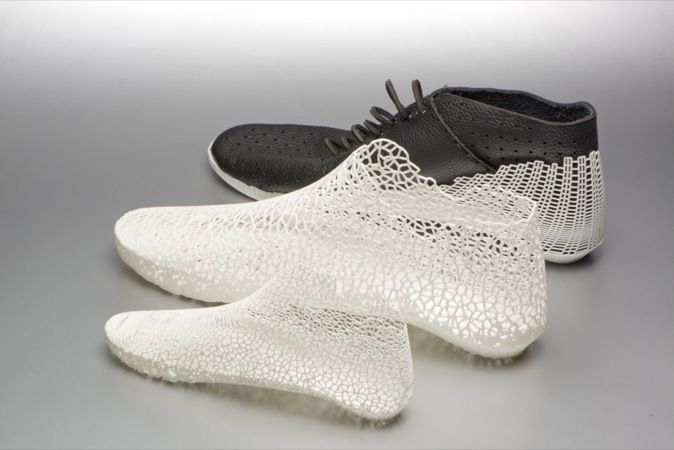 You can buy those shoes on their website.
You can buy those shoes on their website.
But you can also get custom made shoes, as they are offering different models from slides and sneakers for men and women, to wedges with a lattice design. To get your 3D printed shoes, you have to download their app to 3D scan your feet in order to get a 3D model. Then, you just have to choose the shoes among the different models that Feetz offers. They will make you a ready-to-wear pair of shoes based on the 3D model of your feet.
Continuum Fashion also launched ready-to-wear pairs of shoes, created thanks to 3D printing. With Additive Manufacturing, it is possible to give life to organic forms. The project shows that 3D printing shoes actually make sense to create ready-to-wear. Moreover, you can produce them faster than with traditional manufacturing.
3D printed sneakers
A running shoe can now be partially created with 3D printing technology. Actually, the midsoles of running shoes are particularly suitable for 3D printing.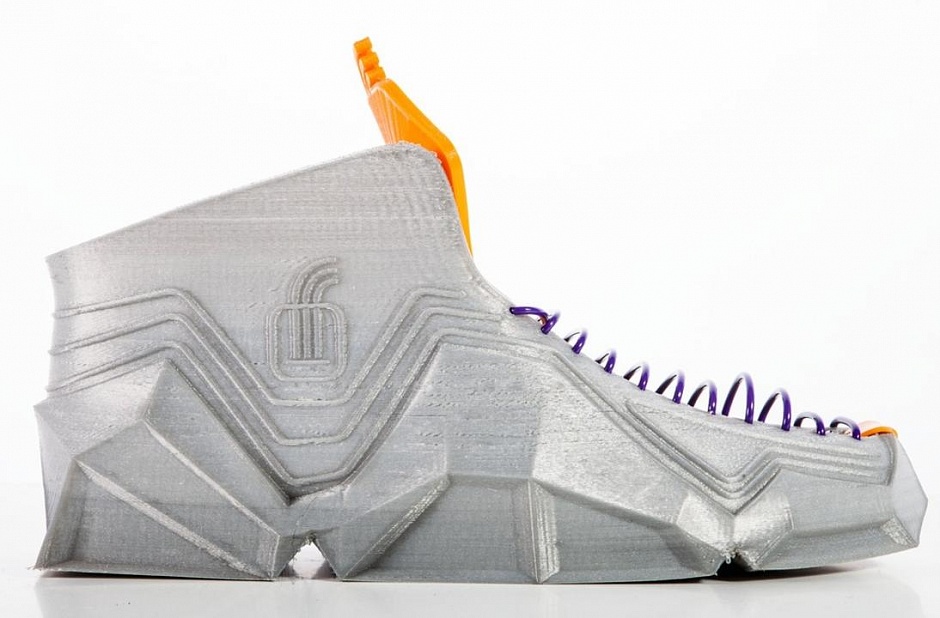 Big shoe manufacturers are using additive manufacturing. For example, brands like Adidas, Nike, New Balance and Under Armor have already printed sneakers. You can already customize your shoes thanks to Adidas, by choosing the look and the color of it, but you will soon be able to go further. Adidas already made a limited edition of FutureCraft 3D, using 3D printing. The brand now unveiled FutureCraft 4D, a footwear with a midsole created in partnership with Carbon 3D, using a new process called Digital Light Synthesis (formerly known as CLIP). Thanks to digital light projection, oxygen-permeable optics and liquid resin, this process can produce a durable and resistant polymeric goods. These Futurcraft 4D shoes will offer a personalized support for athletes and are allowing mass customization. New Balance Zante Generate is another similar project, these sneakers have a partially 3D printed midsole. It is a pair of running shoes with a flexible midsole that offers a good support. Nike also uses 3D printing a lot for prototyping and they are proud to say that they use Selective Laser Sintering to create their prototypes.
Big shoe manufacturers are using additive manufacturing. For example, brands like Adidas, Nike, New Balance and Under Armor have already printed sneakers. You can already customize your shoes thanks to Adidas, by choosing the look and the color of it, but you will soon be able to go further. Adidas already made a limited edition of FutureCraft 3D, using 3D printing. The brand now unveiled FutureCraft 4D, a footwear with a midsole created in partnership with Carbon 3D, using a new process called Digital Light Synthesis (formerly known as CLIP). Thanks to digital light projection, oxygen-permeable optics and liquid resin, this process can produce a durable and resistant polymeric goods. These Futurcraft 4D shoes will offer a personalized support for athletes and are allowing mass customization. New Balance Zante Generate is another similar project, these sneakers have a partially 3D printed midsole. It is a pair of running shoes with a flexible midsole that offers a good support. Nike also uses 3D printing a lot for prototyping and they are proud to say that they use Selective Laser Sintering to create their prototypes.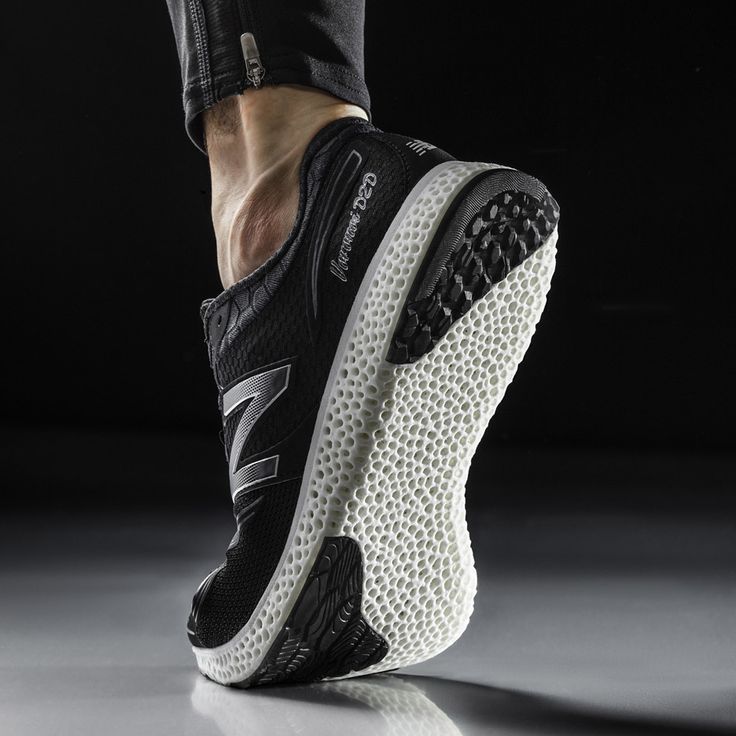 Indeed, you can work and rework on a shoe design very easily thanks to rapid prototyping. They made a partnership with HP, who released the HP Multi Jet Fusion, and will certainly work on new projects soon.
Indeed, you can work and rework on a shoe design very easily thanks to rapid prototyping. They made a partnership with HP, who released the HP Multi Jet Fusion, and will certainly work on new projects soon.
Rethinking the manufacturing process
Nike also uses 3D printing a lot for prototyping and they are proud to say that they use Selective Laser Sintering to create their prototypes. Indeed, you can work and rework on a shoe design very easily thanks to rapid prototyping. They made a partnership with HP, who released the HP Multi Jet Fusion, and will certainly work on new projects soon. Indeed, Nike, is using additive manufacturing to prototype its products, and in 2017, their use of 3D printing was estimated to provide a 10% cost efficiency. With their partnership with HP, mass production could be on its way with the use of these powerful 3D printers. These big leaders of the footwear industry have to start using additive manufacturing in order to keep on being competitive and improve their processes on a different level: it can be for product development, customization, or mass-production.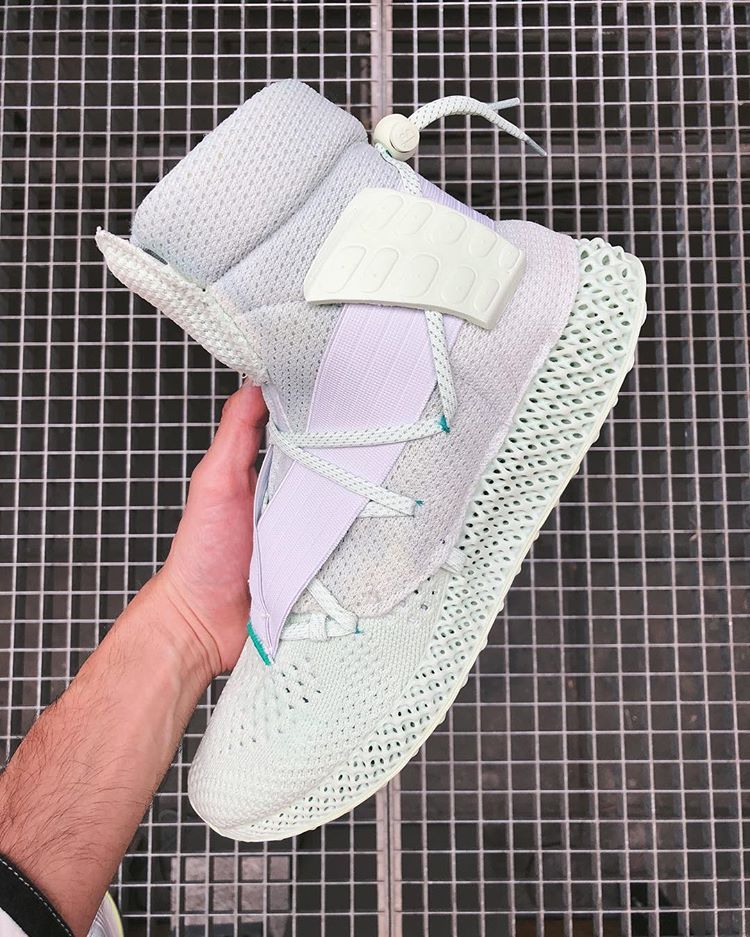
Fully 3D printed shoes?
There is still a lot of work to get the fully 3D printed shoe. Nevertheless, some product developments are going in this direction: Olivier Van Herpt is using 3D scans and 3D printing to create new shoe structures, making them unique, lightweight and quite resistant. These 3D printed shoes have a unique style but are custom-made, meaning that they guarantee you the perfect fit. But Olivier Van Herpt is not the only person working on fully 3D printed shoes. Some other creators like Nicholas Unis are starting their footwear business with fully 3D printed products.What about the future of 3D printed footwear?
3D printed footwear can easily be integrated to your daily life, for example Phits, with their 3D printed insoles, are a good example. Some projects are really accessible to anybody, and could be developed more widely. Personalized pairs of shoes are now accessible to everybody and mass customisation will gain ground in the upcoming years.
Indeed, 3D printing is a great way to get shoes perfectly adapted to your feet. Big brands are making partnerships with major actors of Additive Manufacturing such as HP, and are including the 3D printing process in the production of some of their models. 3D printed shoes, thanks to brands like Nike or Adidas are now entering the mass production era.
Designers will continue to work with 3D printing as it allows to create incredible designs with a lot of freedom. For example, Zoe Jia-Yu Dai is definitely not going to stop working with 3D printing. As she’s interested in men and children’s footwear, new projects could be launched really soon.
The footwear industry is more linked to 3D printing than you might think. All these examples show that there are different ways to create shoes. It can be to push design boundaries or to change manufacturing methods by finding an ecological way to produce, or even to get shoes or insoles made to measure for more comfort. Reasons to create 3D printed shoes are numerous, and it could be pushed further in the upcoming years!
Do you want to start your 3D printing business in the footwear industry? Well, here is our first advice: Choose the right 3D software. Getting the perfect shoe design software will help you start your best project.
Getting the perfect shoe design software will help you start your best project.
You have a 3D model and you want to prototype a pair of shoes, or anything else? You can upload a model on our online 3D printing service.
You want more news about the latest innovations in the 3D printing industry? Don’t hesitate to subscribe to our weekly newsletter.
Related Topics
- Return to Top
Get the latest 3D printing news delivered right to your inbox
Subscribe to our weekly newsletter to hear about the latest 3D printing technologies, applications, materials, and software.
what is available on the market today?
In August 2020, the research company SmarTech Analysis presented its second study of the 3D printing and footwear market. According to the report, this industry is expected to generate over $8 billion in profit by 2030.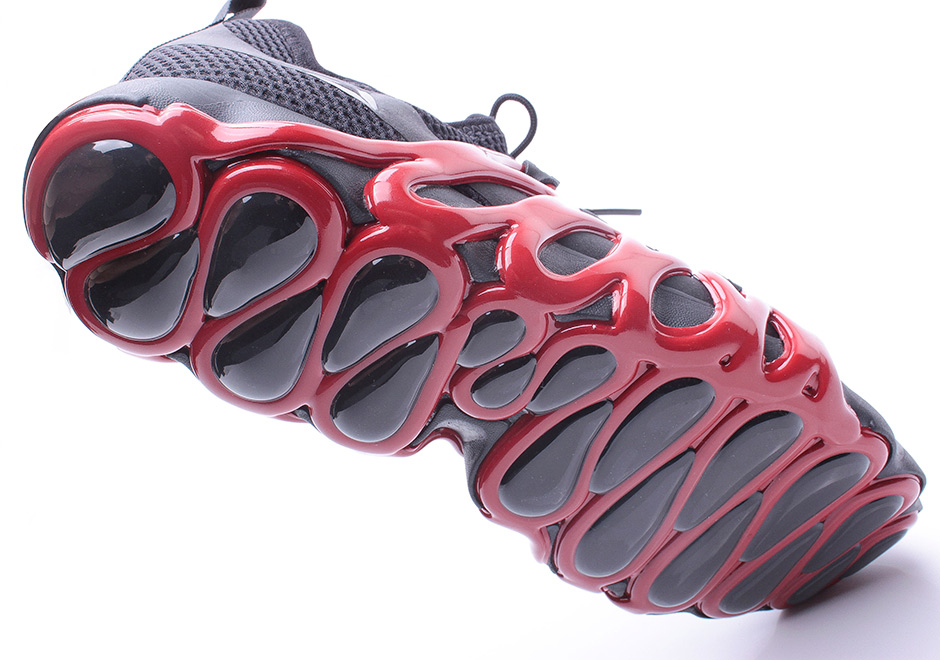 And it must be said that additive manufacturing offers a number of advantages in the production of shoes, the most important of which is the ability to customize the final product. Consumers are looking for difference and uniqueness, and 3D technology can fill that need. They can also offer custom made products with intricate designs perfectly tailored to each individual's morphology. Thus, through 3D scanning and 3D printing, companies create more efficient sneakers, futuristic high fashion shoes, or comfortable and durable soles. Yes, it should be noted that not all shoes are always 3D printed, which is actually quite rare, but, for example, the upper or sole. In any case, 3D printing and shoes go hand in hand and the market is definitely showing great promise! For that reason, we wanted to introduce you to some of the most impressive 3D printed running shoes currently available, whether for sports, the beach, or just for work. nine0003
And it must be said that additive manufacturing offers a number of advantages in the production of shoes, the most important of which is the ability to customize the final product. Consumers are looking for difference and uniqueness, and 3D technology can fill that need. They can also offer custom made products with intricate designs perfectly tailored to each individual's morphology. Thus, through 3D scanning and 3D printing, companies create more efficient sneakers, futuristic high fashion shoes, or comfortable and durable soles. Yes, it should be noted that not all shoes are always 3D printed, which is actually quite rare, but, for example, the upper or sole. In any case, 3D printing and shoes go hand in hand and the market is definitely showing great promise! For that reason, we wanted to introduce you to some of the most impressive 3D printed running shoes currently available, whether for sports, the beach, or just for work. nine0003
3D Printed Adidas Shoe Range
When it comes to 3D printed shoes, it would be remiss not to mention the offerings from famed shoe manufacturer adidas.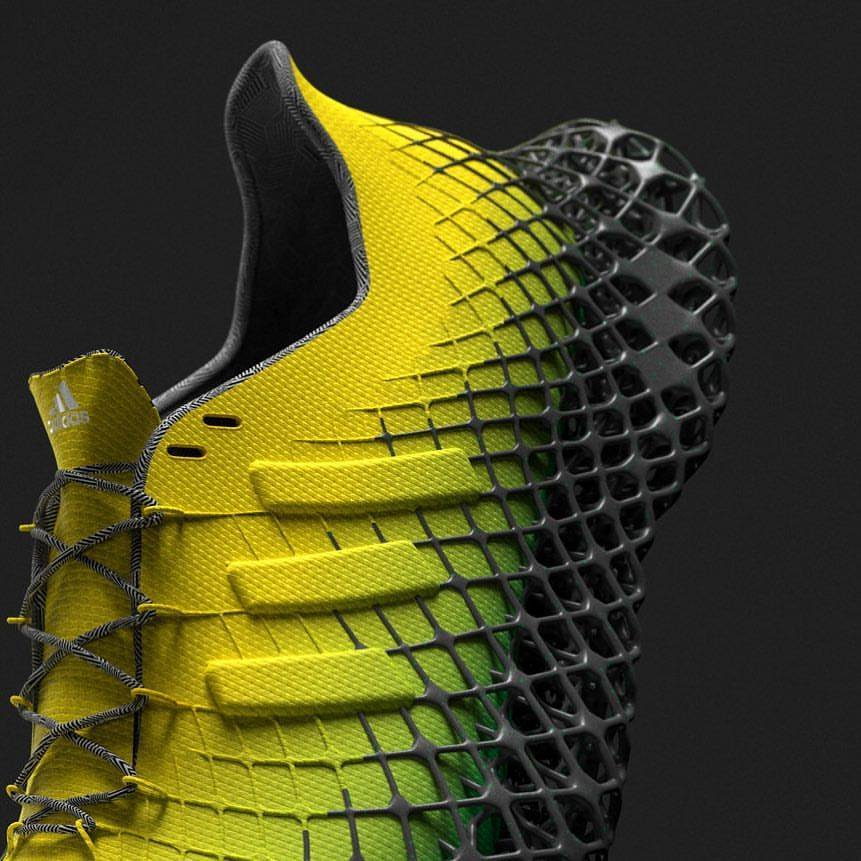 The company has been using 3D printing since 2017, when it partnered with Carbon to create the new Futurecraft 4D shoe, , which is still on sale today. Since then, the company has continued to use additive manufacturing to create unique sustainable footwear. For example, just last year, the company launched two new 3D printed running shoes, the 4D Fusion and the adidas 4DFWD, the latter specifically designed to improve performance. According to the company, 3D printing increases productivity with the lattice structure, as well as increasing flexibility, from reducing lead times to offering reasonably priced shoes that can be fully customized. nine0003
The company has been using 3D printing since 2017, when it partnered with Carbon to create the new Futurecraft 4D shoe, , which is still on sale today. Since then, the company has continued to use additive manufacturing to create unique sustainable footwear. For example, just last year, the company launched two new 3D printed running shoes, the 4D Fusion and the adidas 4DFWD, the latter specifically designed to improve performance. According to the company, 3D printing increases productivity with the lattice structure, as well as increasing flexibility, from reducing lead times to offering reasonably priced shoes that can be fully customized. nine0003
With Carbon DLS technology, the adidas 4DFWD shoes feature a unique 40% bio-based lattice midsole (adidas photo).
Liquid Speed from Reebok
Reebok is one of the largest and most well-known brands in the footwear industry. That's why, a few years ago, the company decided to use additive manufacturing to create soles for one of its athletic shoe collections.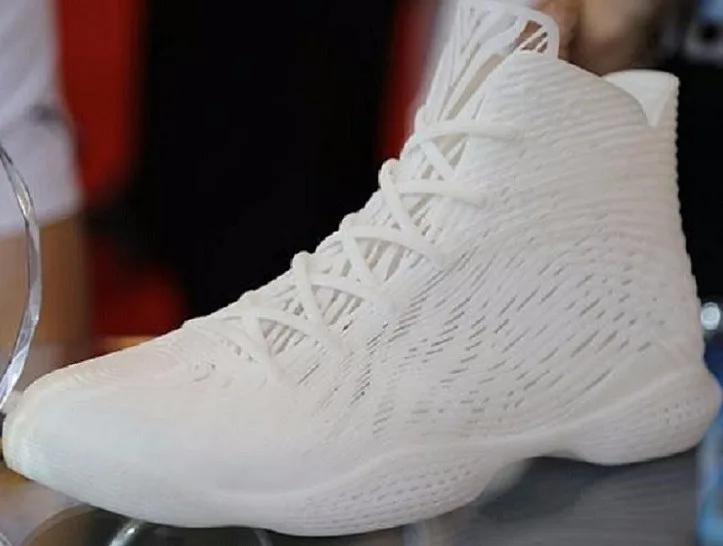 While the rest of the shoe was made using traditional methods, the Liquid Speed has the ultimate outsole. Reebok partnered with chemical company BASF, which used a liquid polyurethane material. A programmed robot was used to create successive layers. In addition to better performance and durability, Liquid Speed has a very original design. nine0003
While the rest of the shoe was made using traditional methods, the Liquid Speed has the ultimate outsole. Reebok partnered with chemical company BASF, which used a liquid polyurethane material. A programmed robot was used to create successive layers. In addition to better performance and durability, Liquid Speed has a very original design. nine0003
Liquid Speed design is original.
New Balance includes 3D midsole
In the same vein, New Balance is partnering with 3D Systems to develop 3D printed midsoles. DuraForm Flex is an SLS insole made from a thermoplastic elastomer material. They combine strength and flexibility and provide maximum comfort for sports shoes. 3D printing technology allows the production of complex designs that optimize cushioning and make shoes lighter. The American brand is working with Formlabs and its stereolithography technology to develop the Triple Cell platform to produce the FuelCell Echo. nine0003
nine0003
The sole of the sneaker was 3D printed.
ECCO and its customizable insoles
ECCO is a Danish footwear manufacturer with many years of experience in the industry. In 2019, the company launched the Quant-U service aimed at customizing shoes using 3D printing. Using the 3D foot scanning process, it is possible to determine the orthopedic fit required for each individual. With this device, ECCO develops 3D printed insoles tailored to the needs of its customers. This part is made of silicone, a material that provides stability as well as a sufficient degree of cushioning. In addition, the company says the insoles are easy to replace and machine washable. nine0003
Photo Credit: ECCO Quant-U
Wiivv meets customer
Wiivv is a young Canadian company that specializes in the production of 3D printed soles and flip flops that are fully adapted to the wearer's morphology.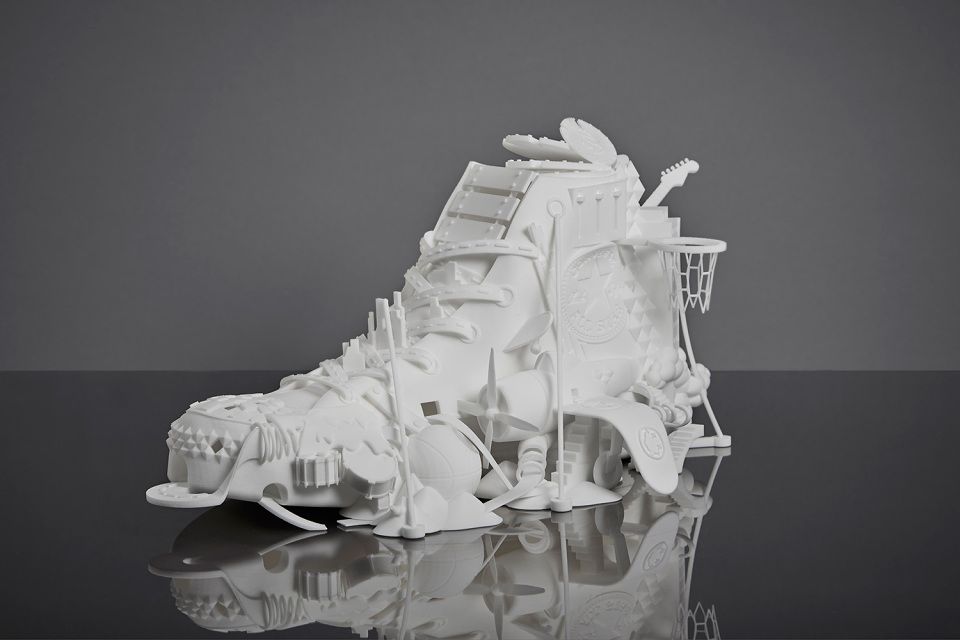 Thanks to the smartphone app, the user can directly scan their foot, send their data to the company and receive a customized solution in a few weeks. Take flip-flops, for example: Wiivv can use 3D printing to personalize certain elements of the shoe, such as straps or a vertical strap. The goal, of course, is to offer the user more comfort. The company is equipped with a machine park in San Diego, and products are manufactured using SLS technology. nine0003
Thanks to the smartphone app, the user can directly scan their foot, send their data to the company and receive a customized solution in a few weeks. Take flip-flops, for example: Wiivv can use 3D printing to personalize certain elements of the shoe, such as straps or a vertical strap. The goal, of course, is to offer the user more comfort. The company is equipped with a machine park in San Diego, and products are manufactured using SLS technology. nine0003
Wiivv Fully Customizable Slippers
3D printed sustainable shoes
How best to combine fashionable shoes with a responsible approach to the environment? With additive manufacturing! Chris Margetts, founder of The Sole Theory and fashion brand Humans Are Vain, uses recycled textiles to make his 3D printed shoes. He explains: “There is a lot of demand for more sustainable products. There is no doubt that there will be consumers who will want to buy these shoes when we launch them on the market.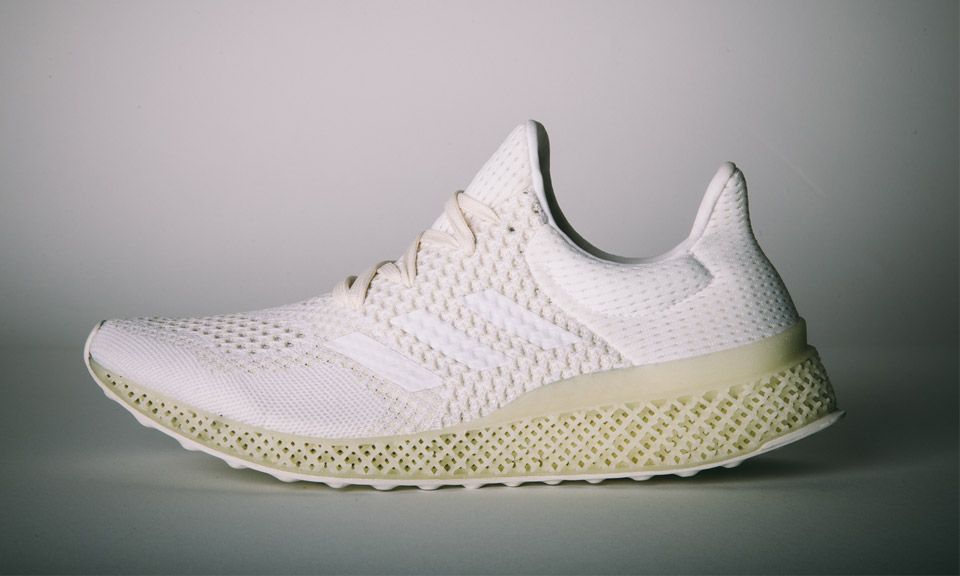 ” He intentionally uses fibers from clothes he once loved to make composite materials. Thus, they can be used as a 3D printing material to create new shoes. The fibers are shredded and turned into filament for the ZYYX Labs 3D printer.
” He intentionally uses fibers from clothes he once loved to make composite materials. Thus, they can be used as a 3D printing material to create new shoes. The fibers are shredded and turned into filament for the ZYYX Labs 3D printer.
Photo Credits: The Only Theory
HERON01 fully 3D printed sneakers
Attention sneaker lovers, the 3D printed HERON01 is sure to please the public. This shoe was completely made by additive manufacturing by the American company Heron Preston, named after its founder Heron Preston Johnson. For this model, the founder of Heron01 paid special attention to the theme of sustainability, since no glue or toxic materials were used in the production process. We also managed to do without the use of seams, which means that shoes can be completely recycled. The scraps and scraps can eventually be used to make a new product. A design idea that goes beyond traditional shoemaking is also reflected in the shoe's features: low ankle cutouts, printed scales and textures, and a bird's foot pattern on the sole.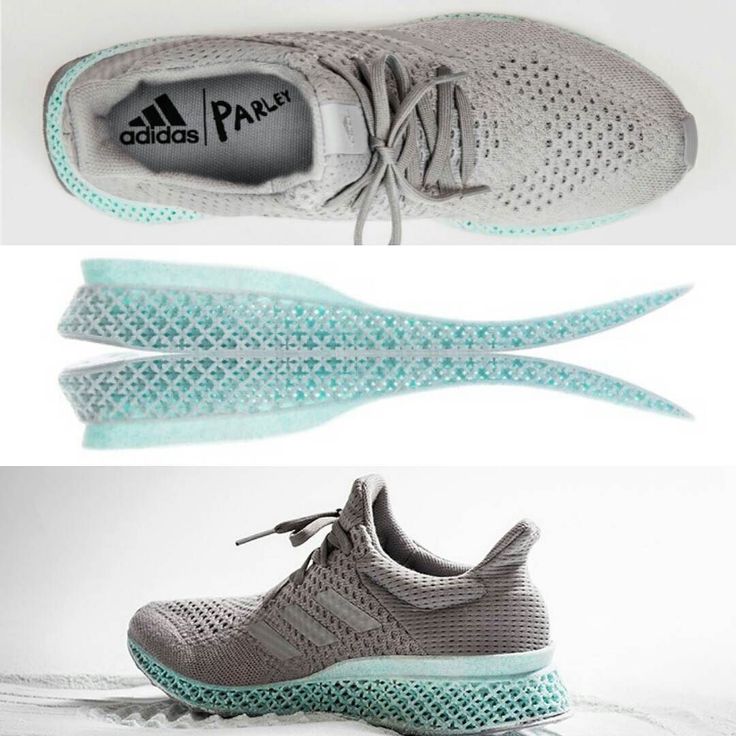 nine0003
nine0003
Sneakers HERON01 (photo HERON01)
Natives shoes and 3D printed shoes
Canadian manufacturer Native Shoes launched the Liquid Printed Natives project with the goal of designing everyday items using advanced techniques such as additive manufacturing. As part of this, the company used liquid rubber to 3D print shoes. The manufacturer says it has used 50% recycled ethylene vinyl acetate (EVA) material to achieve more flexibility and a more stretchy appearance. What stands out about the Native Shoes project is the speed of production: the company explains that 3D technology has significantly reduced production time compared to traditional methods. They also offer consumers a high level of customization. nine0003
The shoes will be 3D printed directly in a tray containing a reusable water-based viscous gel formula.
Eco sandals
We continue this trend of 3D printed sandals with the Organic collection, designed by young fashion design student Lucy Treitnarova.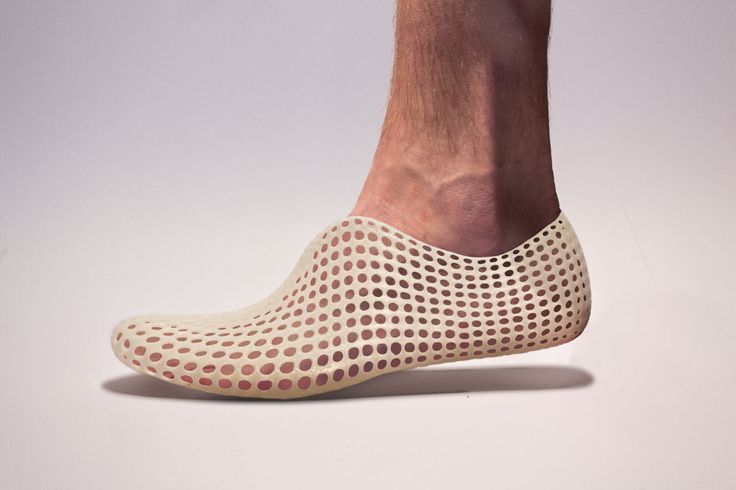 In collaboration with materials manufacturer Fillamentum, she 3D printed the outsole of the sandal, onto which she sewed several organic fabrics made from fibers extracted from pineapple or coconut leaves. The printed outsole needed to be strong enough to withstand this fabric, so Lucy opted for TPU, which is flexible enough yet resistant to abrasion and wear. It also has the ability to be recycled, which is a key ingredient for a young woman. nine0003
In collaboration with materials manufacturer Fillamentum, she 3D printed the outsole of the sandal, onto which she sewed several organic fabrics made from fibers extracted from pineapple or coconut leaves. The printed outsole needed to be strong enough to withstand this fabric, so Lucy opted for TPU, which is flexible enough yet resistant to abrasion and wear. It also has the ability to be recycled, which is a key ingredient for a young woman. nine0003
Mycelium shoes, futuristic shoes
Created by design studio Ica and Kostika, the pair of Mycelium sneakers is completely 3D printed on an SLS machine. Pretty impressive in shape, size and design, it does not go unnoticed on the street - besides, only 5 pairs were created. Its designers claim that these 3D printed shoes are very comfortable because they are fully adapted to the human foot: a 3D file is created from the scanned data. nine0003
Only 5 pairs were created
Hilos 3D Printed Eco Shoes
Portland-based startup Hilos was founded in 2019 and wants to change the way shoes are made by combining technology and craft. Through additive manufacturing, the company hopes to solve environmental problems while producing quality shoes. Made from selective laser sintering of TPU, these recyclable shoes are known for their flexibility and durability. The company admits that with the help of 3D printing, it can bring new product lines to market in as little as two weeks, while the industry average takes 12 to 15 months. nine0003
Through additive manufacturing, the company hopes to solve environmental problems while producing quality shoes. Made from selective laser sintering of TPU, these recyclable shoes are known for their flexibility and durability. The company admits that with the help of 3D printing, it can bring new product lines to market in as little as two weeks, while the industry average takes 12 to 15 months. nine0003
ATHOS 3D printed climbing shoes
The ATHOS climbing shoes, developed by a group of students in Barcelona, are becoming more and more popular. This type of shoe, also known as "climbing shoes", must fit the athlete's foot perfectly to improve traction and prevent slipping. Usually, to make sure they fit well, athletes wear climbing shoes that are smaller than the size of the foot, which causes pain and deformity of the foot. That's why the ATHOS team wanted to create bespoke mountaineering shoes that would meet the needs of every climber. For this, HP MultiJet Fusion 3D printing technology and BASF TPU material were used. The process of getting ATHOS shoes is very simple: just scan your feet with 3 photos, customize the shoes to your liking and once you get them home you can start climbing! nine0003
The process of getting ATHOS shoes is very simple: just scan your feet with 3 photos, customize the shoes to your liking and once you get them home you can start climbing! nine0003
Photo: ATHOS
Pleko Carbon Fiber Running Shoe
The brainchild of Italian middle distance runner Miro Buroni and Diadora, the Pleko shoe is made up of many 3D printed components. The 3D printed parts include the insole, outsole, studs and ribs. Designed from composite materials, carbon fiber to be exact, and through a powder sintering process, these various elements have made it possible to produce a shoe that is flexible, resistant to wear and, above all, customizable. Indeed, thanks to 3D scanning and race simulation software, shoe designers can offer athletes a reliable and comfortable solution. nine0003
Photo : CRP Technology
3D Printed Dance Shoes
The Purmundus Challenge 2021 was won by start-up company Act'ble, which collaborated with top athletes to develop new pointe shoes.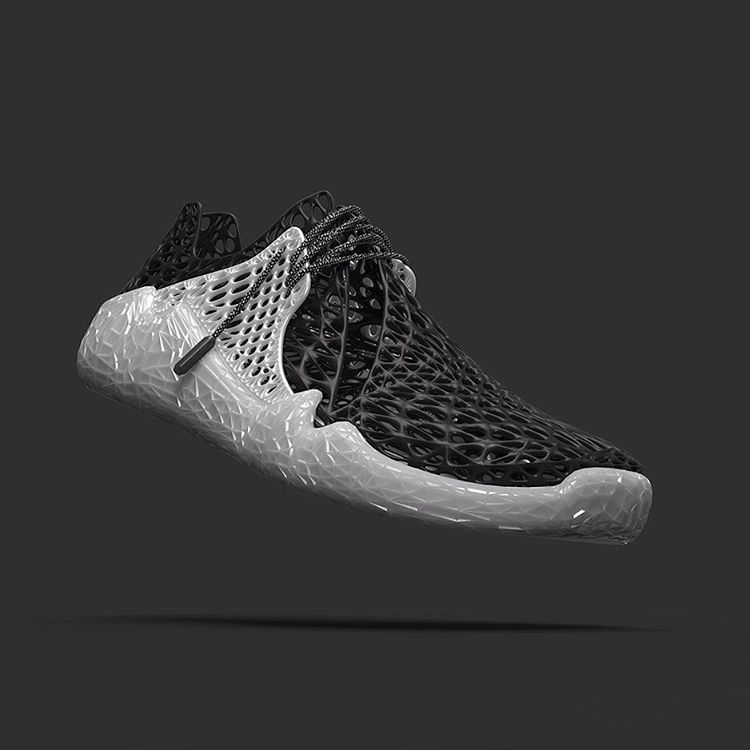 Designed for classical ballet and contemporary dance, the shoe is called the New Pointe Shoe Sole. These shoes are expected to last five times longer than traditional pointe shoes. It was designed to greatly reduce the physical pain that dancers experience during ballet. To make the shoes, the team 3D-printed the sole, but didn't specify what process or materials they used. nine0003
Designed for classical ballet and contemporary dance, the shoe is called the New Pointe Shoe Sole. These shoes are expected to last five times longer than traditional pointe shoes. It was designed to greatly reduce the physical pain that dancers experience during ballet. To make the shoes, the team 3D-printed the sole, but didn't specify what process or materials they used. nine0003
Photo: Act'ble
Parametriks Print 001, shoes printed entirely in one material
Earlier this year, designer Nathan Smith unveiled the Parametriks Print 001, a 3D printed shoe using parametric design. This method, using design and material science to develop details, has resulted in shoes that stand out from the crowd for their comfort. According to Nathan Smith, he used Grasshopper, a plug-in included with the Rhinoceros 3D modeling software, to design Parametriks Print 001. In terms of shoe production, the designer explains that he relied on SLA machines and used TPU. nine0003
nine0003
Photo: Parametriks
A source
SmarTech Analysis, 3D printed shoes, 3D printing, Carbon DLS technology, adidas 4DFWD sneakers, Reebok, 3D technology, 3D scanning, 3D Systems, SLS technology, 3D foot scanning, 3D printed soles
3D printing for footwear
Application
Follow author
Subscribe
Don't want
9
The most notorious example of 3D printed shoes was by Adidas in 2015. Then they released the first sneakers with a printed sole - Futurecraft 3D. Around the same period or a little earlier, on popular portals with 3D models, you could download and print your own sandals, of course, more for fun. Those. 3D printers have been used in shoe manufacturing for a long time. But few people know how things are in the real Russian shoe production and how long 3D printing technologies have been used. nine0003
RALF RINGER is a Russian company specializing in the production and sale of men's, women's and children's shoes under the brands Ralf Ringer, Piranha and Riveri.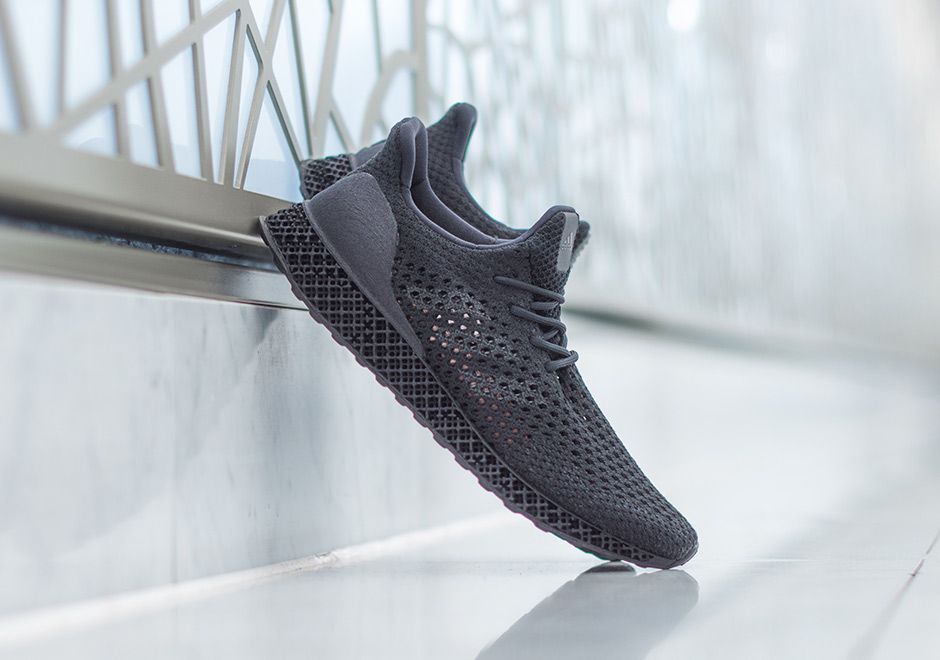 Production facilities are located in Moscow, Zaraysk and Vladimir.
Production facilities are located in Moscow, Zaraysk and Vladimir.
RALF RINGER acquired its first 3D printer back in 2017.
The production of soles is a complex technological process, which includes the production of expensive aluminum tooling, in other words, molds. The cost of a mistake is about 10,000 euros. Therefore, to reduce risks, it is important to make the most accurate layout possible. Previously, RALF RINGER carried out this process on 6-axis CNC machines, or on powder printers. Both methods did not suit them: in the first case, it was expensive equipment, in the second, expensive materials. nine0003
RALF RINGER bought a HERCULES STRONG 3D printer in 2017 to make sole models.
The cost of making a model immediately decreased by 15-20 times, and the manufacturing time was reduced to a day.
Then heels began to be printed. It is very important for the heel to "stand" correctly on the plane, the comfort when walking depends on it.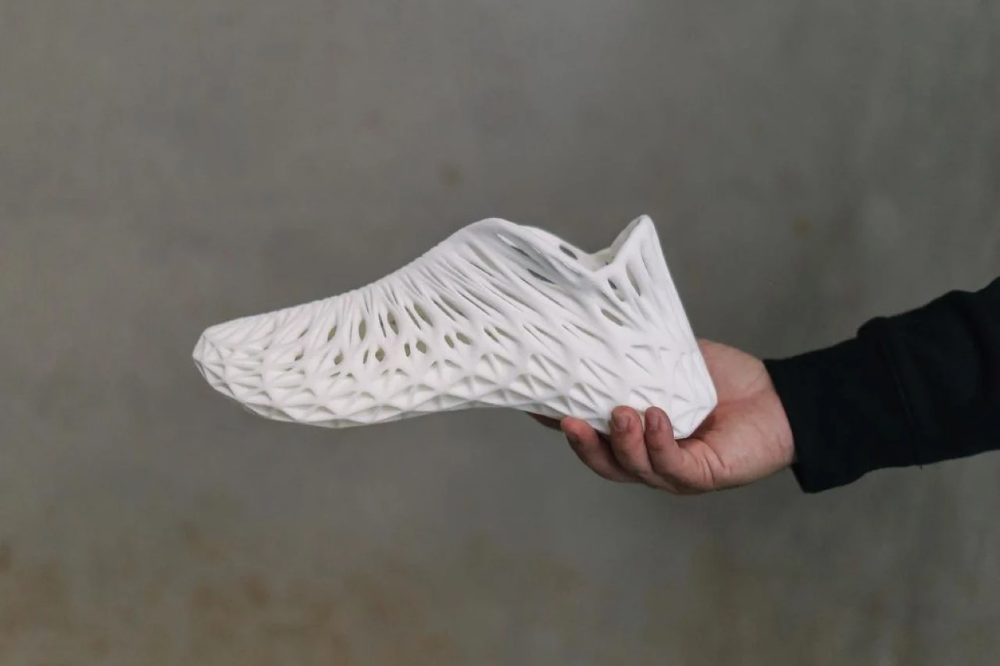 All the main elements, such as the heel itself, the main insole / half insole, arch support, hard heel counter, must be perfectly fitted. It is important to note that the feel of the foot - depending on the deflection - changes significantly for every millimeter of values. Therefore, in addition to aesthetics, functional indicators were selected - material, filling density, wall thickness. nine0003
All the main elements, such as the heel itself, the main insole / half insole, arch support, hard heel counter, must be perfectly fitted. It is important to note that the feel of the foot - depending on the deflection - changes significantly for every millimeter of values. Therefore, in addition to aesthetics, functional indicators were selected - material, filling density, wall thickness. nine0003
Now, before opening the molds for the RALF RINGER heel, they print a functional model of the heel, attach it to the shoe and carry out all the necessary fitting and technological operations before the mass launch.
Having received a functional heel model, they thought about obtaining a functional flexible sole model. For the production of such a functional model, it was decided to print molds with a short life cycle .
The RALF RINGER team has developed special technologies for designing and printing molds, selected materials and technological modes of casting.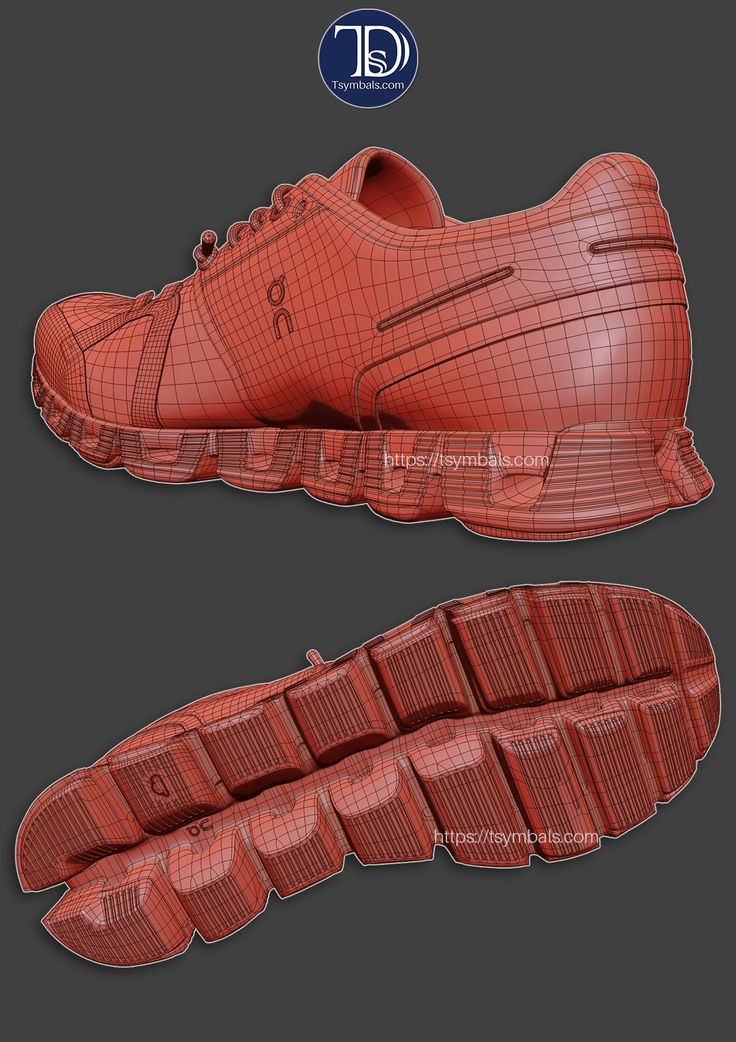
Learn more





